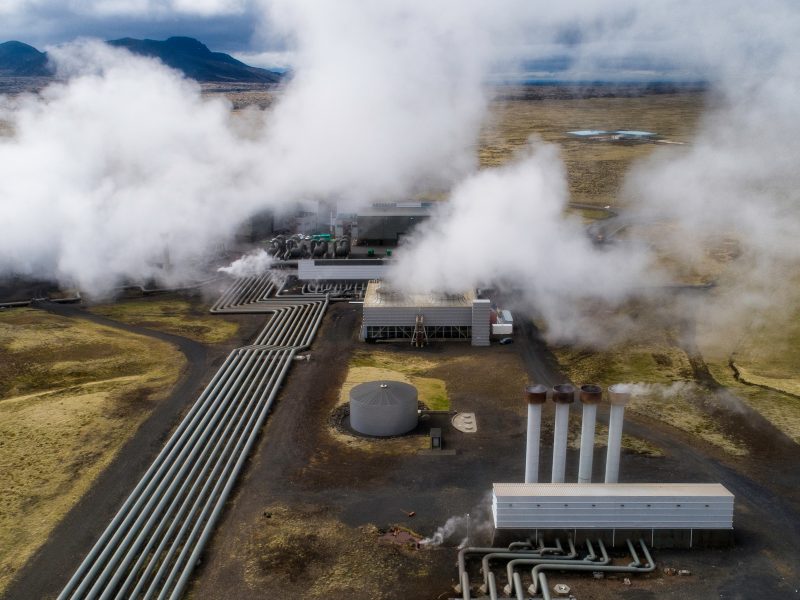The European Geothermal Energy Council (EGEC) has released the “Geothermal NOW” manifesto, urging regulators to take action to eliminate the obstacles preventing geothermal energy from fully realizing its potential.
The Manifesto summarises the following points
Geothermal energy stands as a distinctive renewable energy option, offering consistent electricity, heating, cooling, storage solutions, and even mineral extraction, such as lithium.
It resides beneath the ground, present beneath our very feet, homes, workplaces, and industrial sites globally. Given adequate political attention and regulatory structures, geothermal energy can emerge as the cornerstone of an affordable, locally accessible, inclusive, and swift transition to sustainable energy.
Geothermal energy is inherently European. It doesn’t rely on fuel imports or foreign technologies. Accessible year-round, it operates independently of weather conditions or time of day. Offering stability and reliability, it serves as a safeguard during uncertain times, safeguarding our economic well-being.
Geothermal serves as a crucial link between fossil fuels and renewables. There’s substantial overlap in competencies, technologies, and skills between these sectors. Moreover, it lays the foundation for integrating energy systems. Implementing effective policies will expedite this essential transition.
By 2040, geothermal energy has the potential to achieve the following:
- Catering to 75% of the EU’s heating and cooling requirements in residential, public, and commercial buildings.
- Fulfilling 65% of the heating and cooling demand in the agri-food sector.
- Contributing 15% to electricity production along with stability and flexibility services.
- Providing 25% of low to medium industrial process heat at temperatures below 200 degrees Celsius (as half of the EU’s industrial process emissions stem from uses below this temperature).
- Meeting 10% of the EU’s demand for lithium and other raw materials.

The European Geothermal Energy Council (EGEC) has outlined nine strategic actions that should be implemented to harness the full potential of geothermal energy. These actions are aimed at creating a robust framework to support the growth and integration of geothermal energy across various sectors.
1. European Geothermal Energy Strategy:
The European Commission needs to establish a comprehensive geothermal energy strategy that targets tripling the current capacity by 2030. This strategy should include measures to reduce upfront investment costs, support regional planning for renewable energy, improve permitting efficiency, digitalize geological data, and promote business models that support geothermal adoption in buildings, industry, and agriculture.
2. Financial Risk Guarantee Mechanism:
De-risking investments in geothermal projects is crucial. An EU-wide or regional financial risk guarantee mechanism is necessary to ensure that all member states can benefit from de-risking schemes, thereby leveraging private capital and making the energy transition more inclusive and cost-effective.
3. Digitalized Geological Data and Efficient Permitting:
The permitting process for geothermal projects needs to be streamlined and digitalized. This involves creating accessible and interactive tools for geological data, which would reduce project development times and remove specific bottlenecks hindering the geothermal sector’s growth.
4. Geothermal Industrial Alliance:
Forming a Geothermal Industrial Alliance would facilitate the implementation of EU legislation by bringing together EU institutions, member states, financiers, permitting agencies, and material suppliers. This alliance aims to galvanize private capital and support the widespread adoption of geothermal technologies.
5. Planning and Business Models:
The EU should provide guidance on planning local and regional geothermal heating and cooling systems, especially 4th and 5th generation networks. This would empower local authorities to utilize local renewable resources effectively and build confidence in innovative business models, such as Renewable Heating and Cooling Purchase Agreements (RHCPAs).
6. Geothermal Agriculture Commitment:
Recognizing the importance of food security, the Geothermal Agriculture Commitment should facilitate the use of Common Agriculture Policy funds for geothermal energy investments. This would help stabilize energy costs for farmers and support rural communities by promoting high-quality local food production using geothermal energy.
7. Geothermal Lithium and Critical Raw Materials:
Geothermal energy can play a crucial role in extracting lithium and other raw materials needed for Europe’s energy transition. By 2040, geothermal sources could supply up to 15% of the EU’s lithium needs. An industrial roadmap is required to maximize this potential through sustainable production and circularity principles.
8. Underground Thermal Energy Storage (UTES):
Geothermal energy offers an efficient solution for heat and electricity storage, known as Underground Thermal Energy Storage (UTES). The EU should invest in research, innovation, and market incentives to commercialize UTES, which is essential for balancing energy needs and ensuring stable heating and electricity systems.
9. European Green Industrial Deal:
The EU should integrate geothermal energy into its broader industrial strategy, focusing on state aid, industrial policy, research, and innovation. This includes designing EU funds such as Cohesion, Structural, Modernisation, and Just Transition funds to support higher investment volumes in geothermal energy, ensuring a skilled workforce and resilient supply chain.
Download the “Geothermal Now: Priorities for the EU’s 2024-2029 Mandate Manifesto” by clicking here.